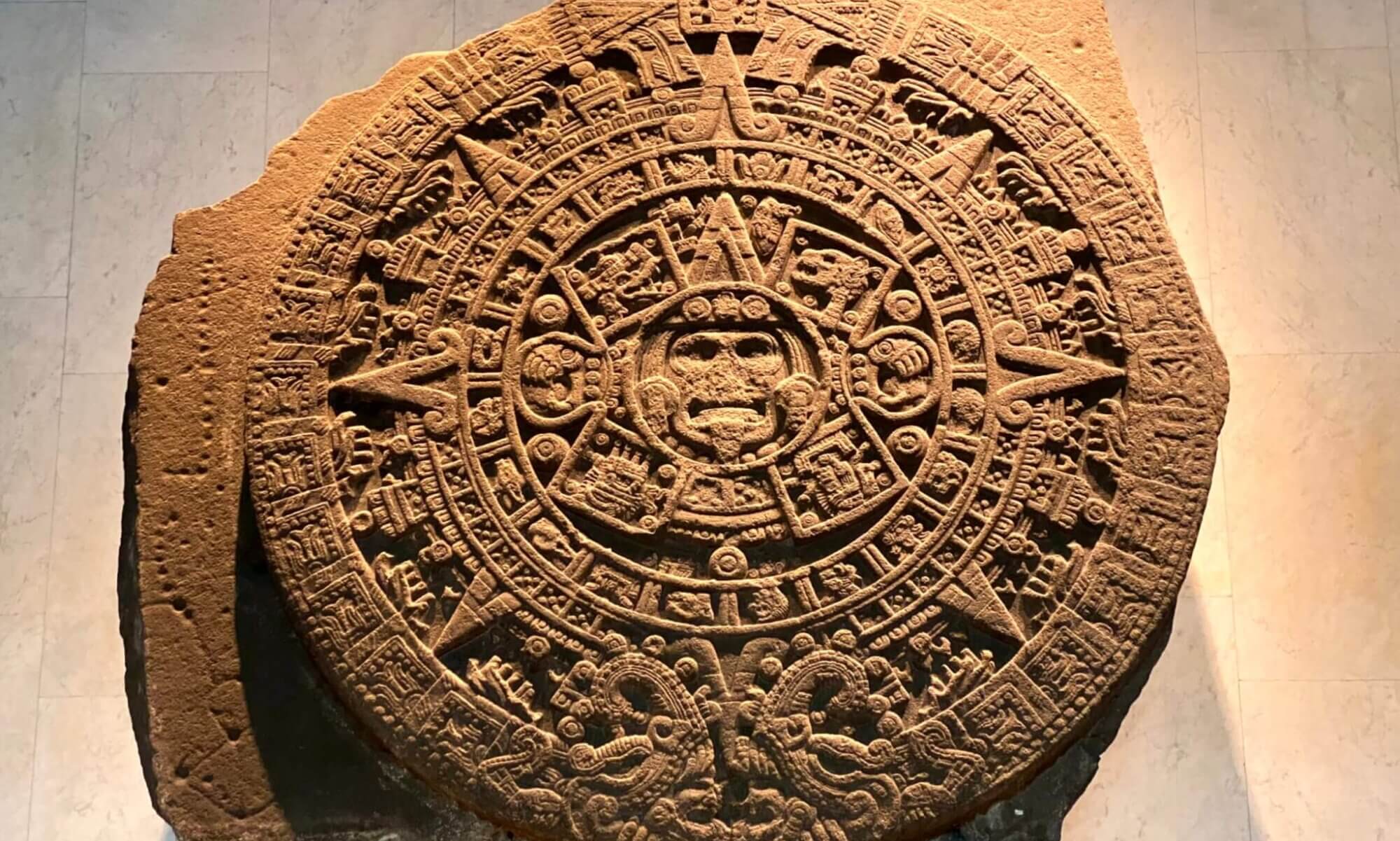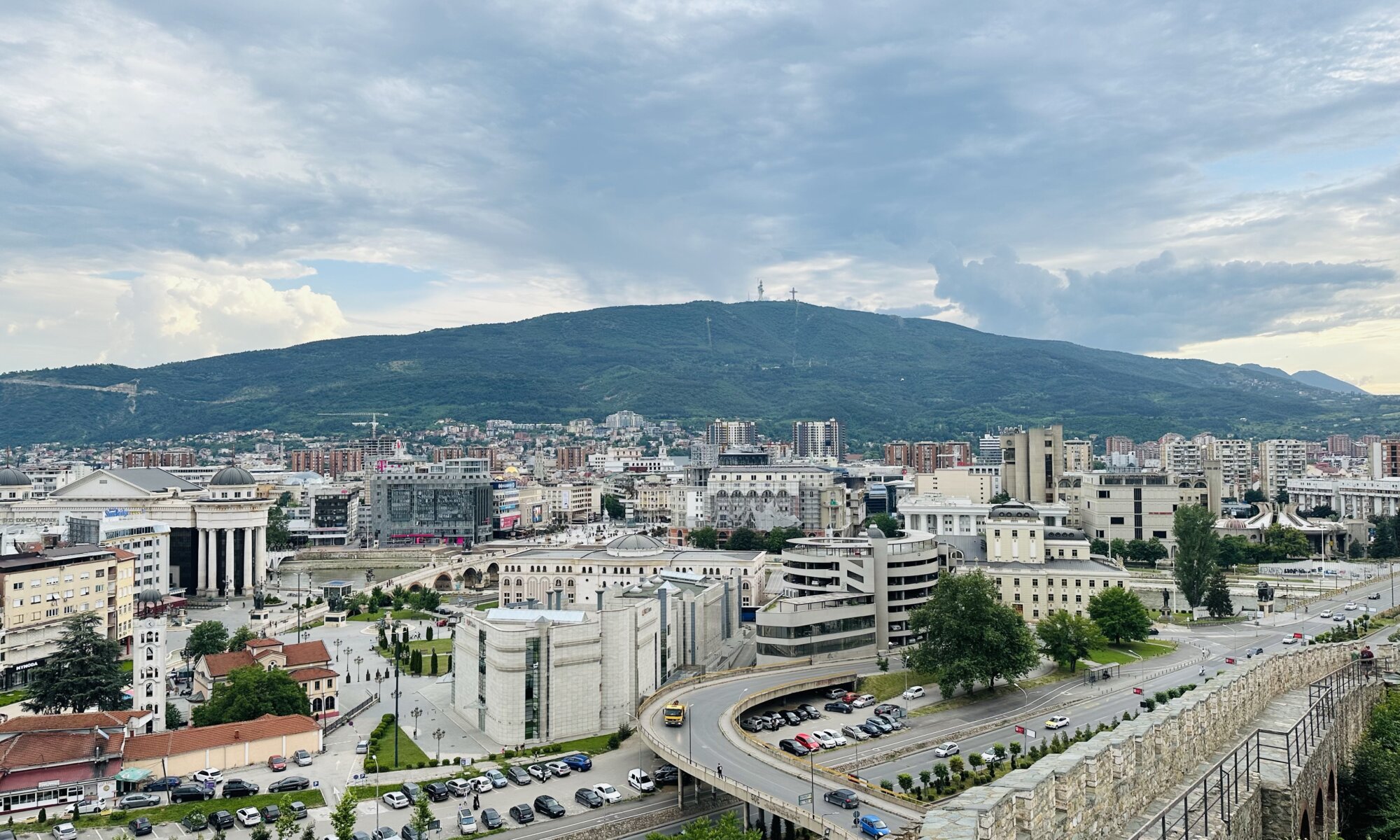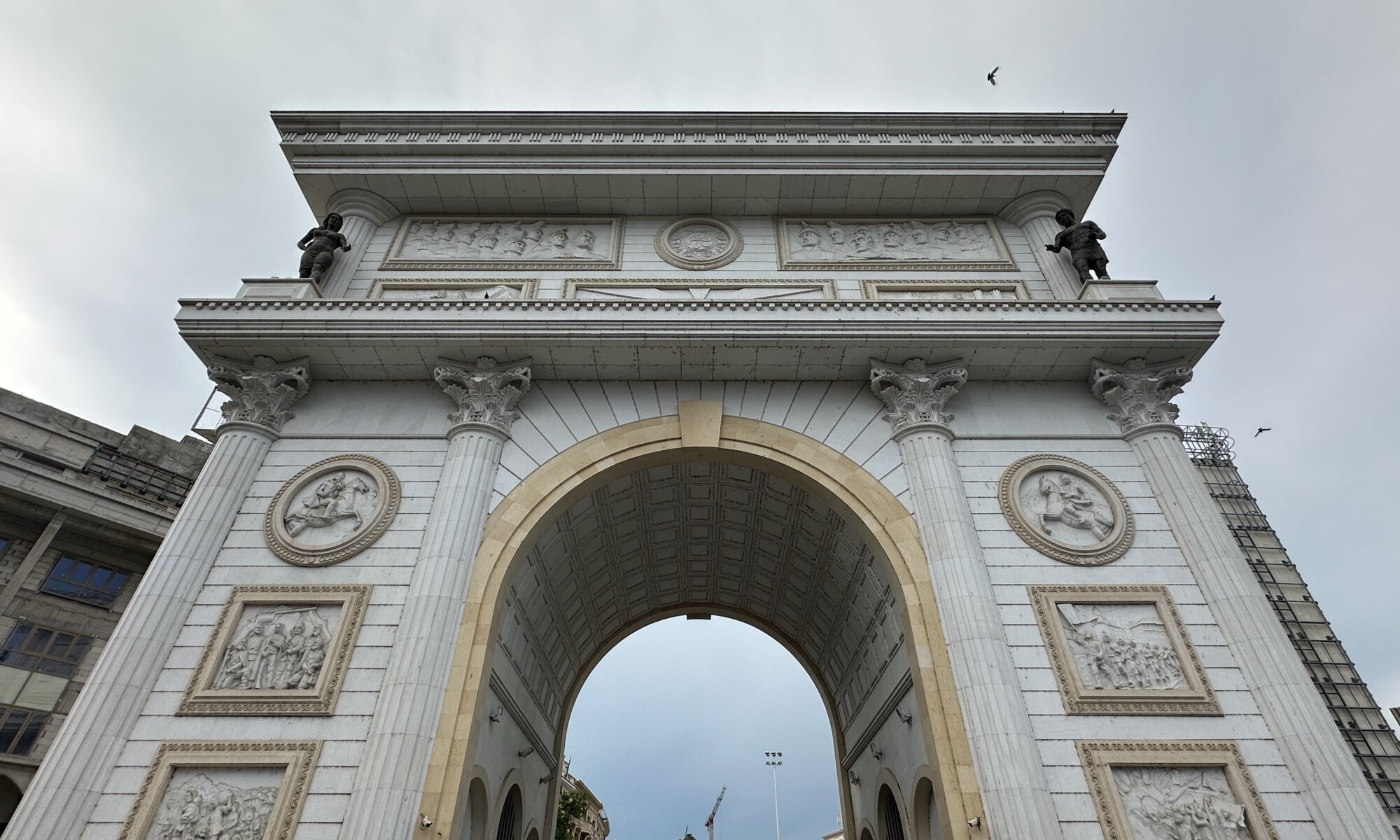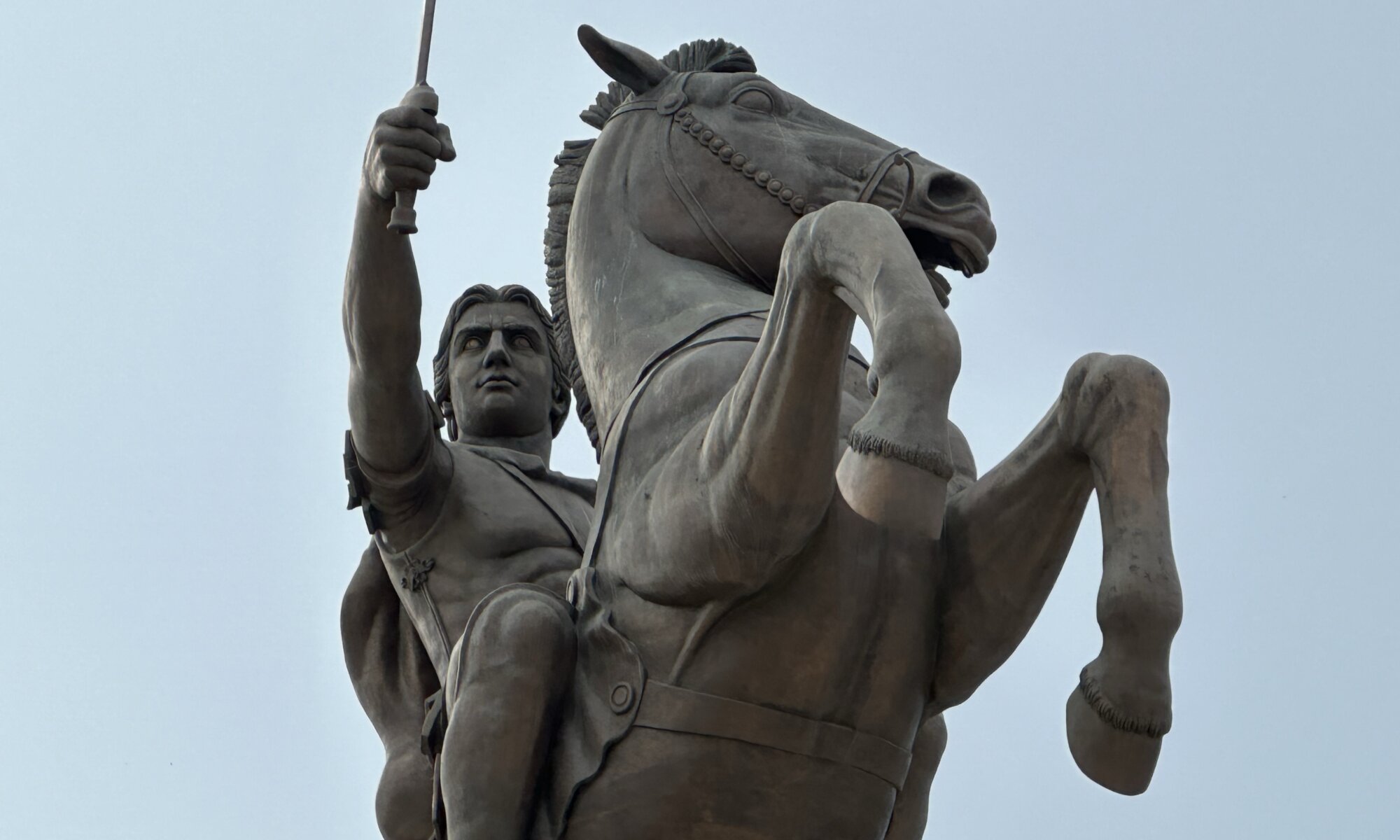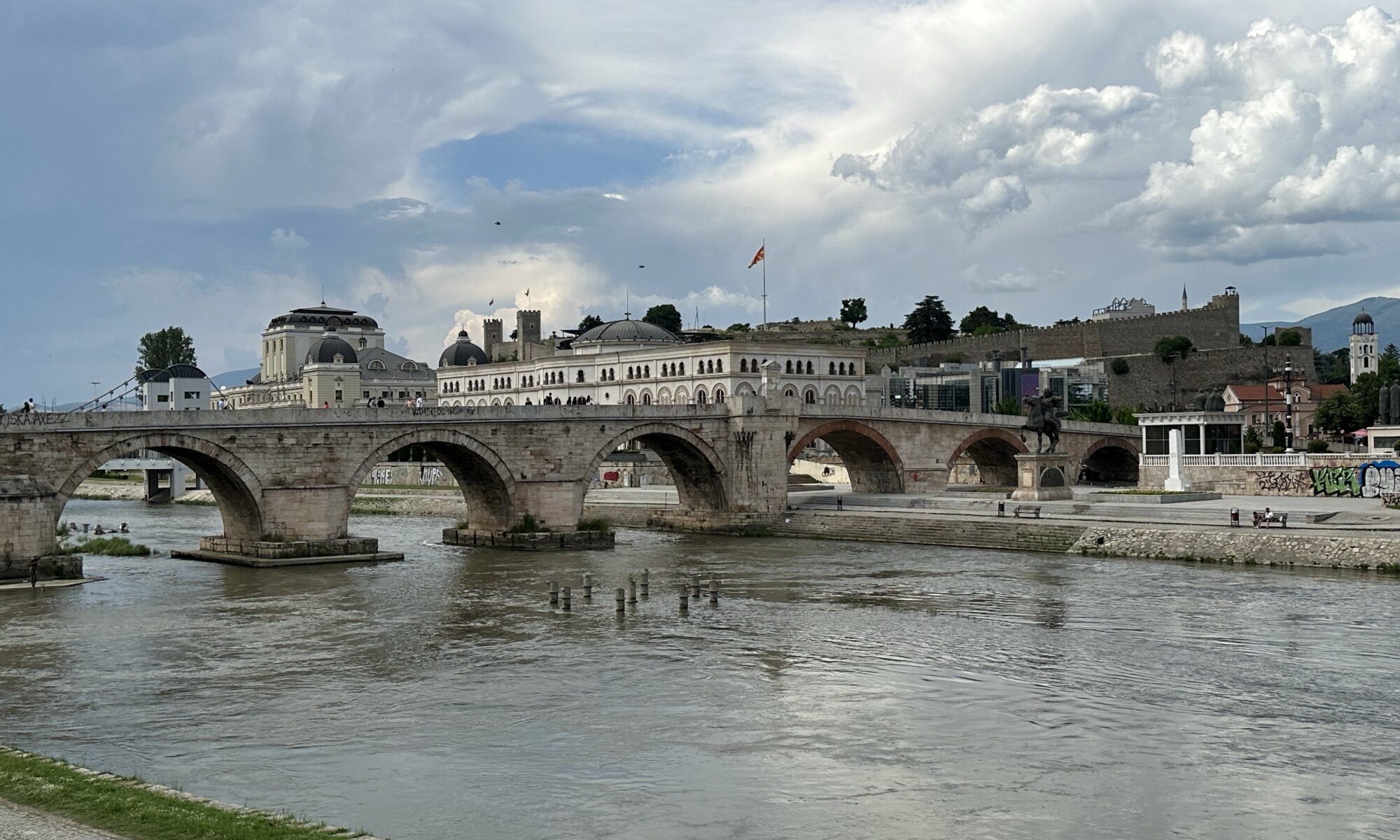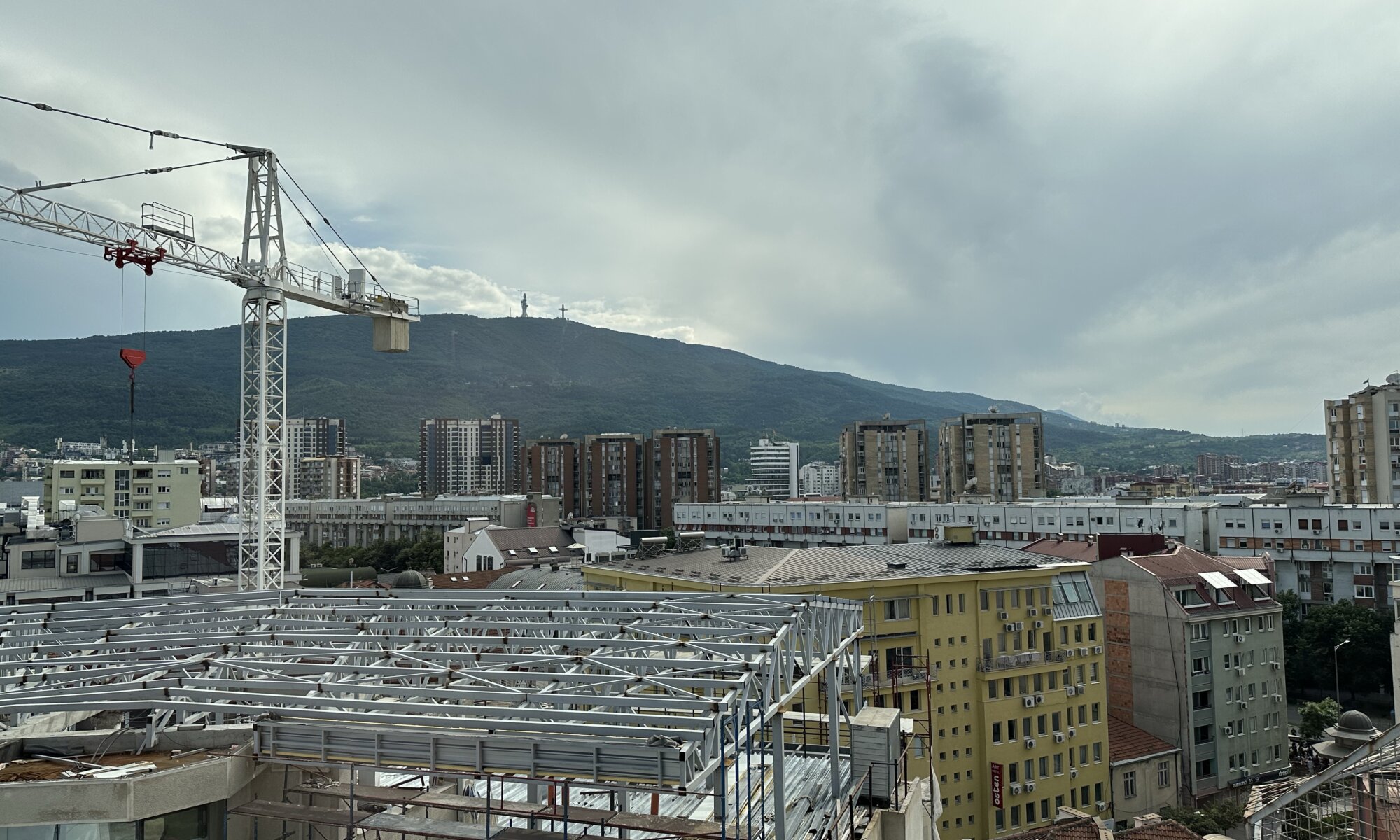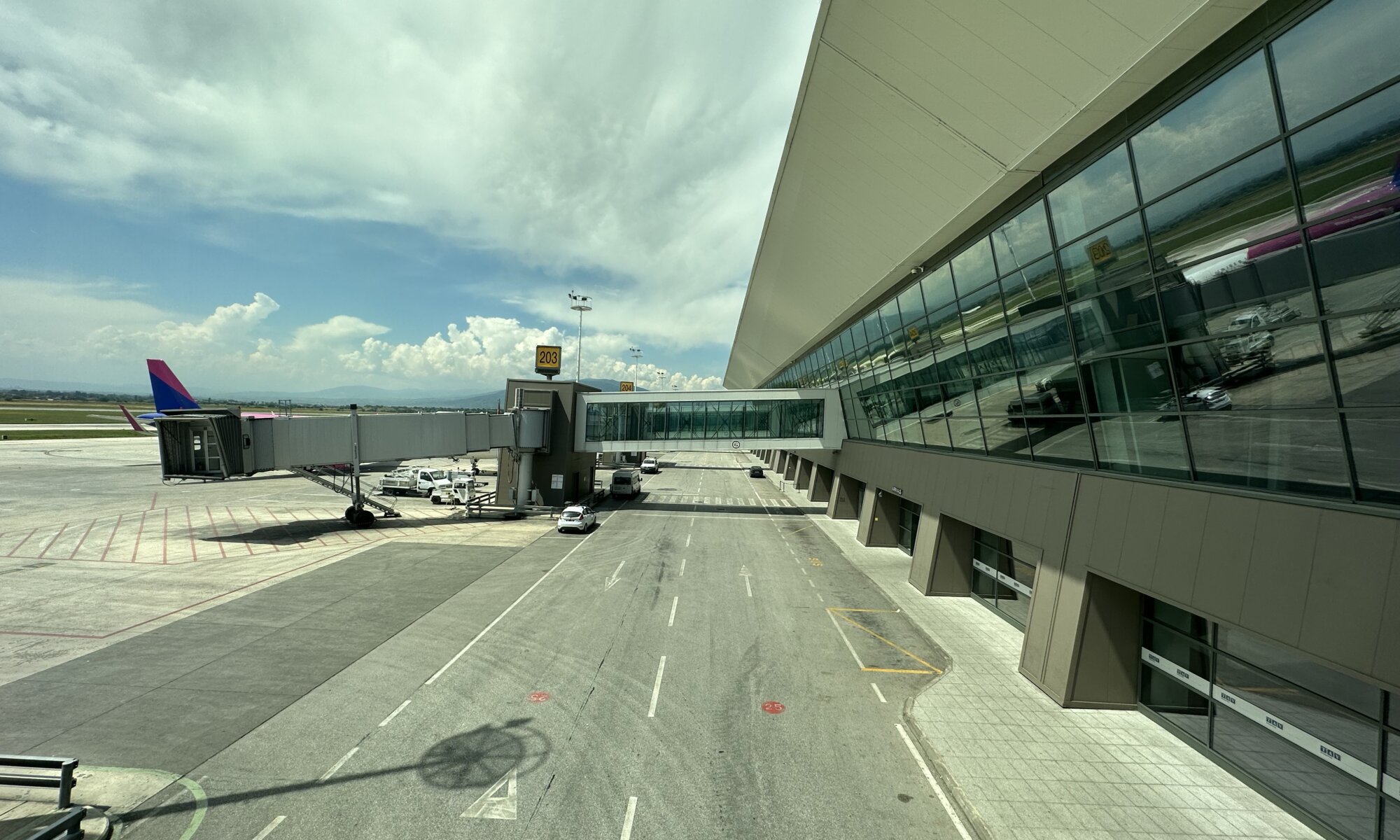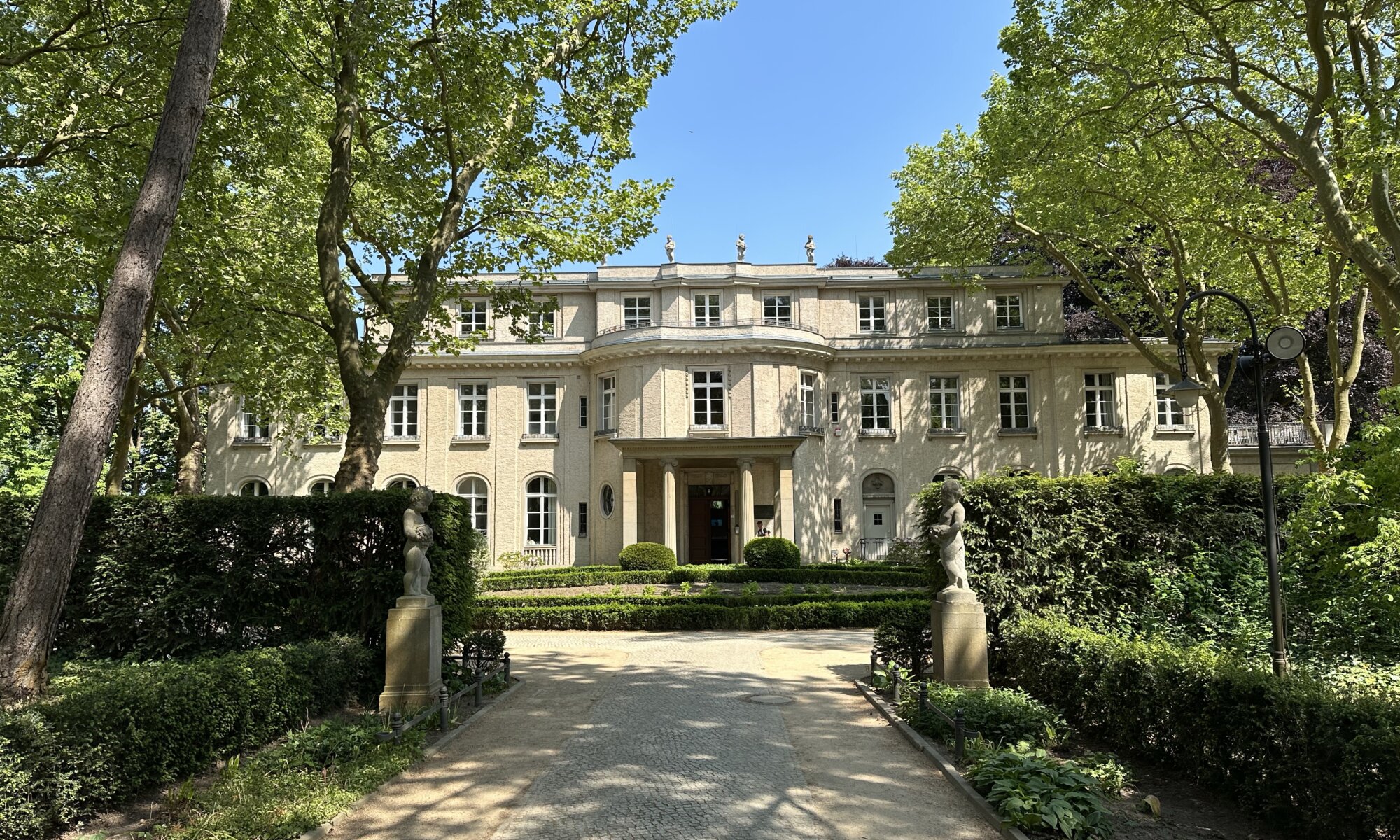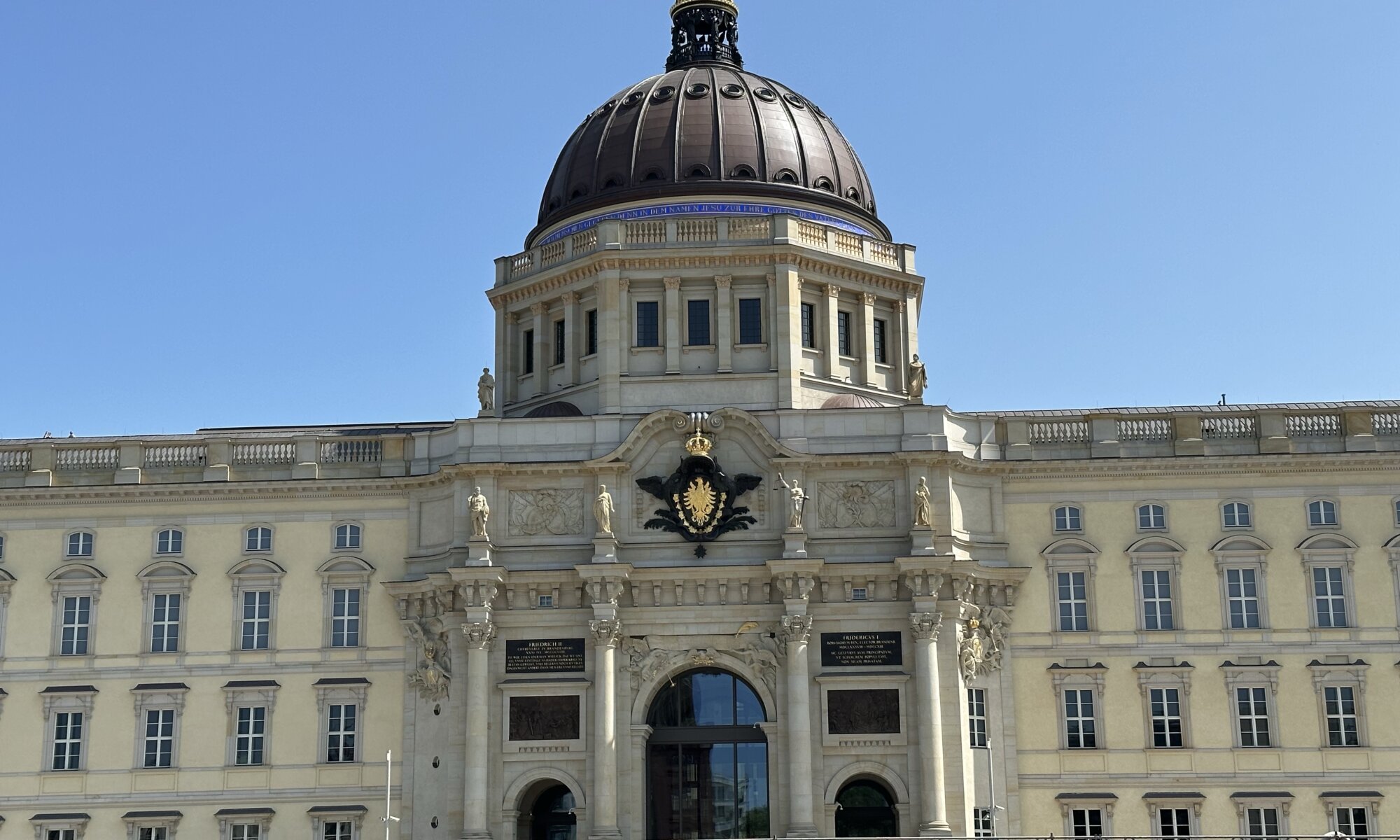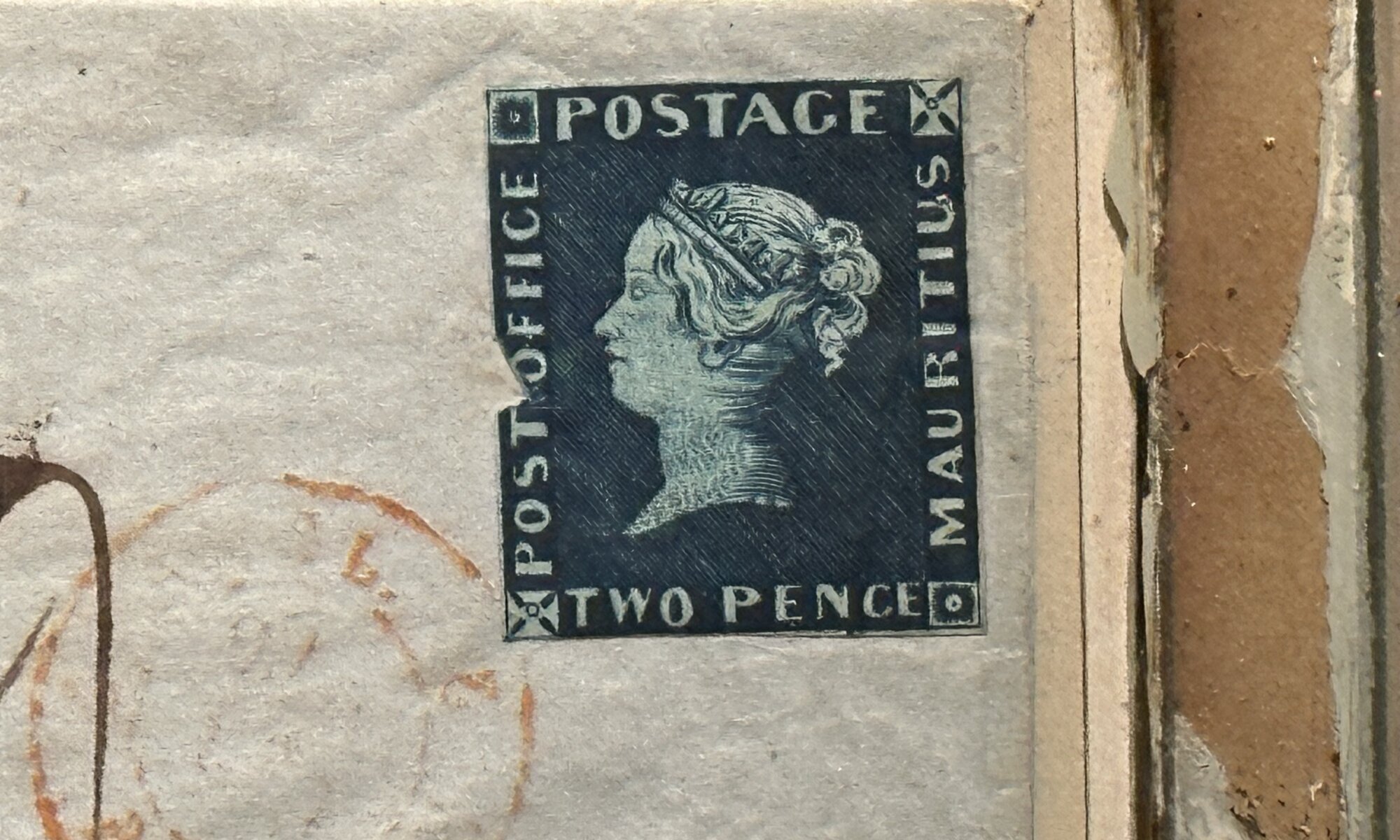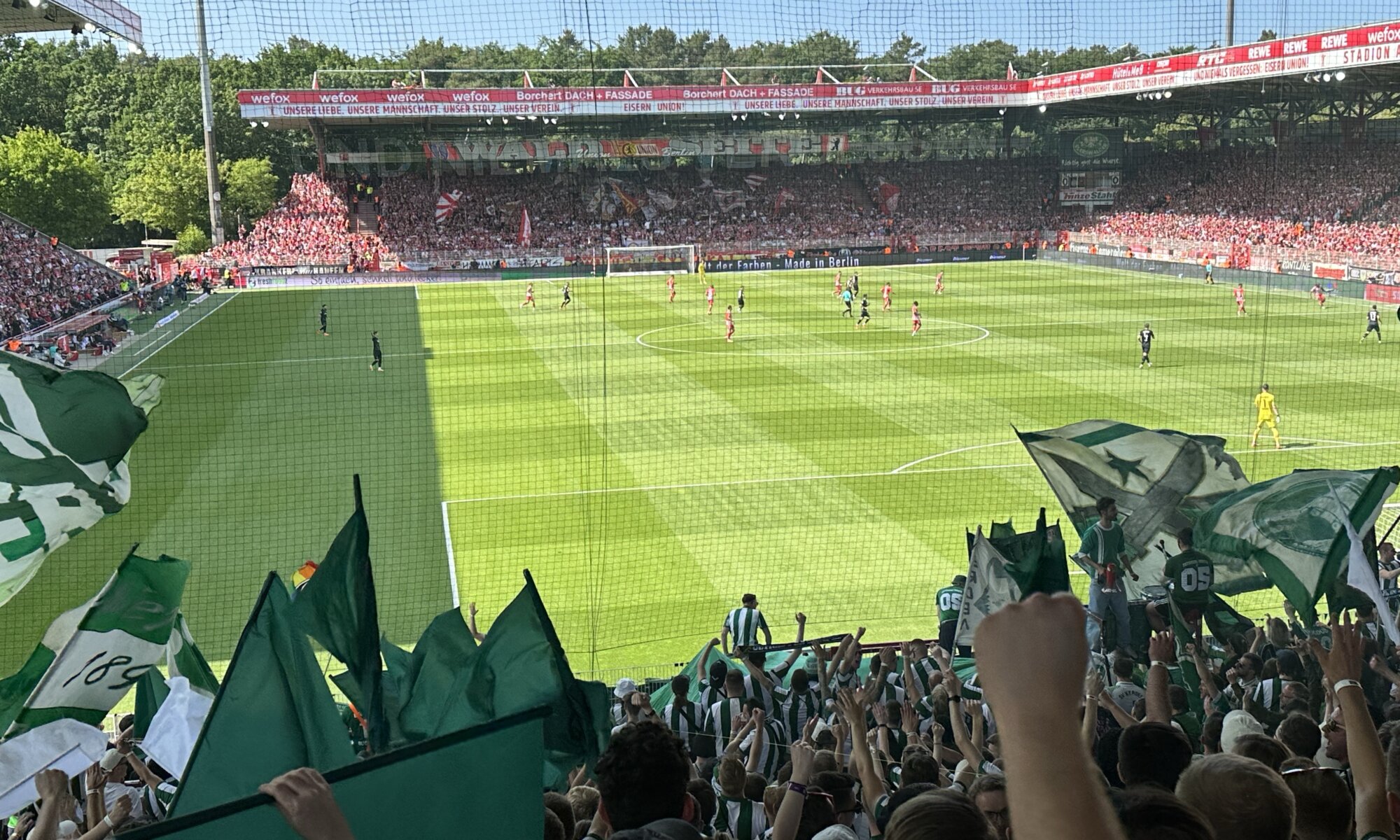The fortress of Скопје is called Kale (the Turkish word for fortress) and located on a hill next to old city center. It was built in the 6th century by Byzantine emperor Justinian I. It became important over time as Скопје was the capital of the First Bulgarian Empire, but also the Serbian emperor was crowned there in 1346. When in 1963 an earthquake destroyed Скопје to large extent, also the fortress received massive damage. Kale has been rebuilt to some extent, but still today excavation works take place there.
Continue reading “Kale”Porta Makedonija
Leaders seem to love triumphal arches. If you don’t have one like at Paris, you built one like at București. But it is rather seldom that you really invest in such monument nowadays. The Porta Macedonia at Скопје is an exception to this rule created in 2012 during the highly disputed project Skopje 2014 reshaping the city center. It commemorates the 20th anniversary of the young state of North Macedonia.
Continue reading “Porta Makedonija”Alexander the Great
Once you’ll reach the Macedonia Square of Скопје you will be astonished: in its center there is a big column reminding one of the Trajans column at Roma, surrounded by lions and large statues of soldiers. And on top is a giant statue of Alexander the Great on his horse Bucephalus. One of the largest monuments I’ve ever seen in a city center and one the creates a conflict with the neighbor Greece as both countries fight about whom the heritage of this leader belongs to.
Continue reading “Alexander the Great”Three bridges
The old and the new city center of Скопје, North Macedonia, are connected by an ancient bridge, the Stone Bridge (Камен Мост). Already in Roman times a bridge was crossing the river Vardar here. The current structures are of Osman origin: they were created by Mehmed the Conqueror from 1451 on. In 1944 the German Wehrmacht wanted to blow up the bridge which could be prevented – and therefore the bridge is still today a town’s landmark of the city and part of the city arms.
Continue reading “Three bridges”Centrally located
There are plenty of good hotel options at Скопје, North Macedonia. One that suited all my needs was the ibis located opposite to the Brutalist-style telecommunication building connected to the famous post office. It can be found in a quiet side street, just a stone’s throw away from the Macedonia Square. Via a bridge next to the hotel you can reach the old town very fast and the transfer from the airport also brings you close to this place.
Continue reading “Centrally located”Меѓународен аеродром Скопје
The airport of Скопје (SKP), North Macedonia, is a small but good one. It has one terminal and one runway, as a passenger it is very convenient and fast to use. Formerly the airport was named after Alexander the Great; as a part of the conflict resolution with Greece the airport name has been neutralized. SKP is located 20 kilometers outside of Скопје at Петровец. It is operated by a Turkish airport company called TAV.
Continue reading “Меѓународен аеродром Скопје”Meeting followed by breakfast
The Wannseekonferenz is a dark moment in German history. It took place on January 20th, 1942 in the Villa Marlier at the Wannsee lake of Berlin. Delegates of different government institutions were invited to a ‘meeting followed by breakfast’ and coordinated the deportation of all Jewish citizens of Europe to extinction camps in the East. The Holocaust itself was already decided by that time, but the conference was used to define the victims and the schedule in more detail; it was the administration of the so called ‘Final Solution to the Jewish Question‘ (‘Endlösung der Judenfrage‘).
Continue reading “Meeting followed by breakfast”Alles nur geklaut
The center of the Museumsinsel in the heart of Berlin has a colorful past: From 1443 on it was the location of the Berliner Schloss (also named Stadtschloss), the seat of the Electors of Brandenburg, the kings of Prussia and later the German Emperors. It was torn down in 1950 by the government of the GDR and on its grounds the Palast der Republik was built, housing the parliament named Volkskammer. This parliament building then was demolished until 2008 to rebuilt the historic Berliner Schloss, now housing museums and carrying the name Humboldt-Forum. A replica of a historic building worth a visit!
Continue reading “Alles nur geklaut”Mauritius blue
The communication museum (Museum für Kommunikation) in the capital city of Germany resides in an amazing ancient building in the city quarter Mitte (Leipziger Straße / Mauerstraße). Its predecessor, the Reichspostmuseum, was opened in 1872; highlight of the building is the six meters high giants statue added in 1895. The current museum is operated by a foundation owned by the German state and financed by the Deutsche Post and Deutsche Telekom. That seems very reasonable because the focus of the collection is the history of mail and telephony.
Continue reading “Mauritius blue”An der alten Försterei
There are not many clubs from the East of Germany who currently play or formerly played in the Bundesliga. The division of the country into FRG (BRD) and GDR (DDR) for some decades still today shapes the scoreboard of the first German soccer league. Since 2016 the artificial club RB Leipzig which is a marketing vehicle for an energy drink producer is present, formerly Hansa Rostock, Energie Cottbus und Dynamo Dresden were there (all of them clubs only few people in the West could relate to). But things are getting better: since 2019 the 1. FC Union Berlin is inside the league. And its story reads like a miracle or fairytale.
Continue reading “An der alten Försterei”